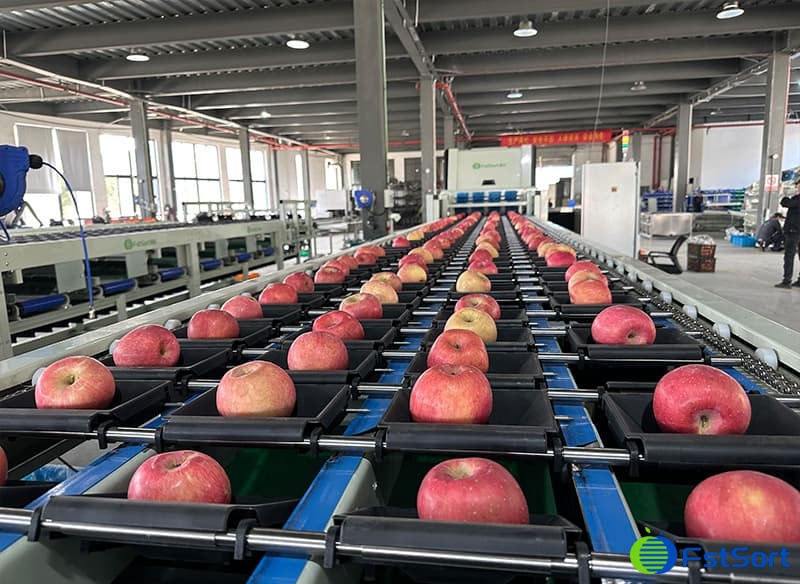China is the world's largest producer and consumer of apples. From July to September every year, apples enter a large number of picking period, and the main production areas include Hebei, Shandong, Shaanxi, Shanxi, Gansu and Xinjiang, with an annual output of more than 40 million tons. With the continuous improvement of China's apple industry chain, a mature industry system has been gradually formed from planting and picking to sorting, packaging, processing and sales.

Apple post-harvest sorting not only improves the standardization of product quality, but also enhances market competitiveness and promotes the continuous development of China's apple industry. In particular, commercialized sorting and packaging of apples have been able to meet the demands of the international market, driving the export of Chinese apples to increase year by year, widely sold to Southeast Asia, the Middle East, Europe and North America and other regions.
The Key to Improving Sorting and Packaging Efficiency: Machine Vision Technology
In traditional sorting and packing plants, picking fruits and vegetables is a very complex task. Sorting criteria cover a wide range of dimensions, colors, defects, and more, and must be completed in a very short period of time to ensure that the product reaches the consumer fresh. In the past, these tasks were mainly done manually and required a lot of labor. As technology advances, machine vision is gradually replacing manual labor for more efficient sorting and packaging.
Combining high-quality optical lighting platforms, image acquisition hardware and fine-tuning software, machine vision systems can provide industrial machines with high-quality images to accurately detect fruit defects. Machine vision improves the speed, quality and reliability of sorting compared to manual screening.
Machine Vision: Accurate and Efficient Defect Detection

Requirements for defects vary from retailer to retailer and from customer to customer. Especially for food products, the condition of the defects at the time of detection has a direct impact on their freshness. Manual sorting, on the other hand, is often subjective and susceptible to human factors.
Unlike the medical industry, apple sorting does not require absolute precision, but the process must be fast and reliable. Considering the processing speed of the conveyor belts, one conveyor belt can handle up to 15 apples per second, and with multiple lanes and machines, the volume of product handled can be several tons per hour.

Fstsort Vision Inspection System: Improving Apple Sorting Efficiency and Quality
As a leader in China's fruit and vegetable sorting industry, Fstsort is committed to providing customers with efficient and accurate sorting equipment. Our vision inspection system improves the quality and efficiency of apple sorting through two core benefits:
Omni-directional identification of external defects: Apples rotate at high speed during sorting, ensuring 360° dead-angle identification of external defects such as rust, dark wounds, and so on. Machine vision can quickly detect and eliminate unqualified fruit.
High-precision internal quality control: without cutting the apples, the non-destructive testing technology accurately determines the internal brix, moldy heart and other indicators to quickly screen out substandard fruits and ensure the consistent internal and external quality of the apples.
If you are looking for more efficient apple processing, Fstsort can also provide you with comprehensive processing system solutions, including in-water basketing, air-drying systems and packaging systems, to help you improve production efficiency and ensure product quality.